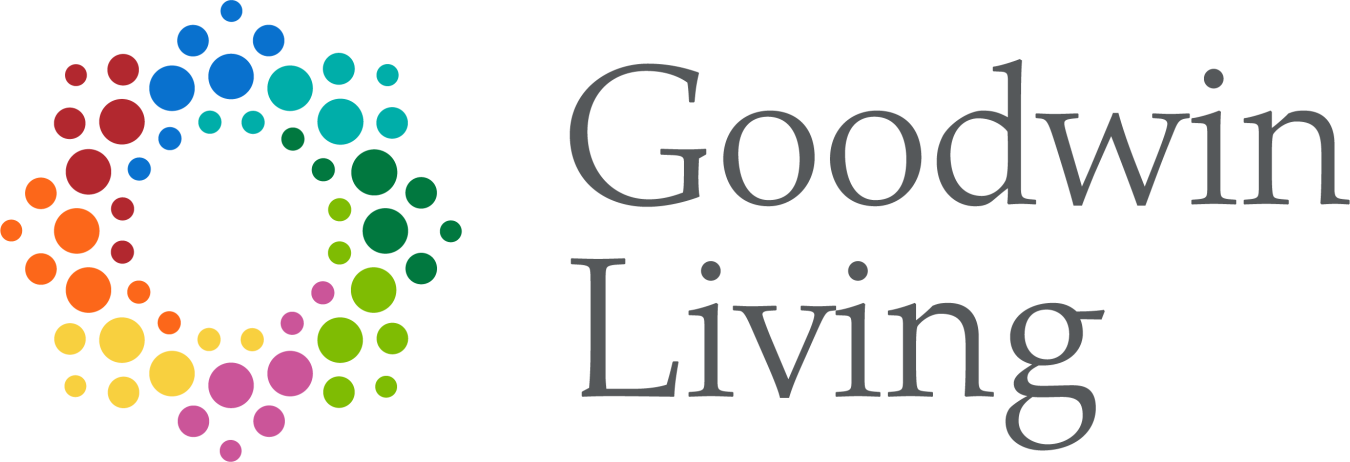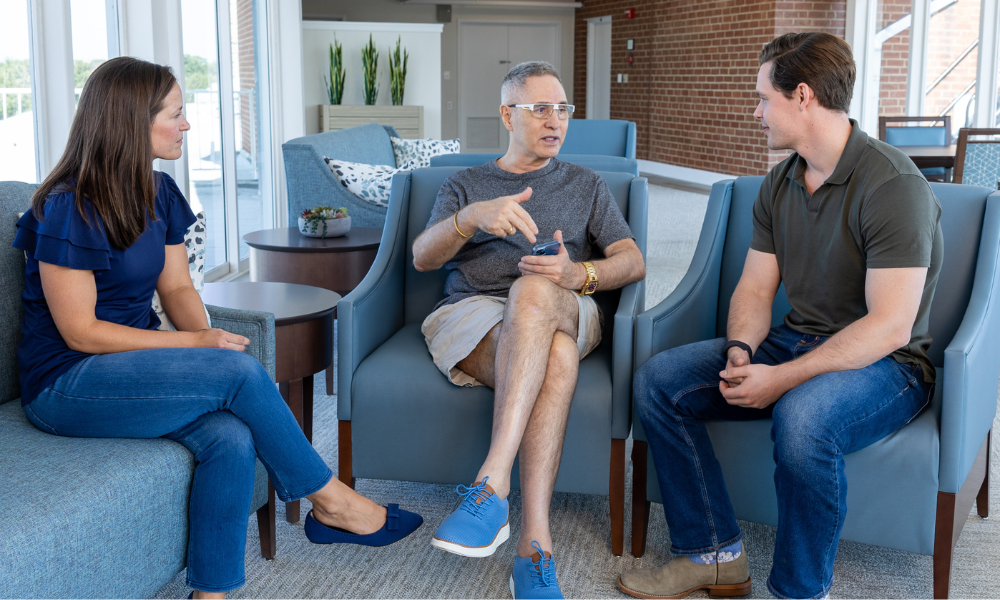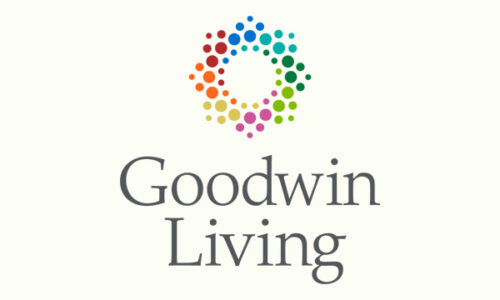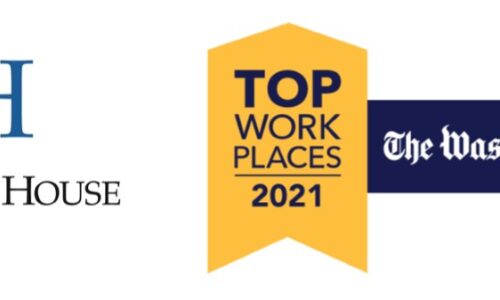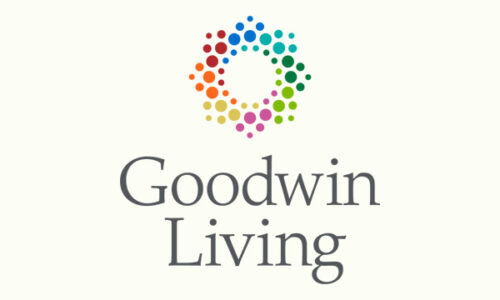Written by AgeTech Collaborative from AARP
For about a year now, Goodwin Rehabilitation (Goodwin) — a part of AgeTech Collaborative™ from AARP testbed participant Goodwin Living — has been working closely with Vitala, an AgeTech Collaborative startup participant, to bring Vitala’s cutting-edge physical therapy app to the patients that Goodwin serves. Complementing traditional in-person physical rehab by empowering patients to follow prescribed exercises at home, the app helps improve patient outcomes and opens up new options for plans of care for the team at Goodwin.
To learn more about this collaboration, we spoke with Lia Poynor, therapy manager at Goodwin, and Petter Aasa, co-founder and CEO of Vitala, who described their work together, the outcomes they hope to realize from their work together, and how the AgeTech Collaborative facilitated their connection.
This interview has been edited for clarity and length. Read the originally published article here.
Can you each tell us a little about your organizations?
Lia: Goodwin Living is a not-for-profit senior living organization serving more than 4,000 older adults in Northern Virginia. Our main mission is to support, honor and uplift the lives of older adults and those who serve them. I’m with Goodwin Rehabilitation, which is part of Goodwin Living. We provide rehabilitation services for the residents who live in Goodwin Living communities. To a lesser extent, we provide outpatient services for nonresidents. (You can see Lia and Petter talking about the Vitala app with a patient in the photo above.)
Petter: Vitala is on a mission to make exercise the No. 1 prescribed medication for patients globally. We’ve built a clinically integrated digital health platform that empowers providers to prescribe, monitor and manage diagnosis-specific exercises for patients. We want to make prescribing exercise as easy as prescribing any other type of medication.
What do you mean by “exercise as medicine”?
Petter: The latest research supports the idea that a majority of chronic conditions can be prevented through lifestyle changes, and exercise is a huge component of that. We’ve pulled together more than a thousand research studies that look at exactly how patients should be physically active, depending on a person’s functional abilities and whatever conditions or diseases they might have. We’ve built those insights into our technology, which turns these evidence-based lifestyle interventions into scalable, reimbursable prescriptions for patients. So when we talk about exercise as medicine, we mean that exercise can be prescribed as part of the individualized care plans, complete with dosing guidance, to help people live happier, healthier and more active lifestyles.
What is the collaboration that Goodwin and Vitala have embarked upon?
Lia: Goodwin is always looking at innovative ways to use technologies to support our older adults. About a year ago, we began talking with Vitala about using their services to help our older adults stay as active and independent as possible. We’ve been passing along feedback that we receive from our patients, and Petter and his team have been constantly upgrading and adjusting their solution based on that feedback. It’s been really cool to see the evolution of the technology.
Petter: From our first conversation, I realized that Goodwin and Vitala have a shared mission of making exercise a standard of care for aging adults and as vital as any other prescription. Working with Lia and Goodwin has been extremely fruitful for us: Getting all their feedback and continually improving our platform helps us create even more value for providers and all our users.
So your collaboration is more than Goodwin simply adopting Vitala’s technology.
Petter: Our team is super hungry for feedback all the time, and not just good feedback — we want to hear about all the things that we can do to improve. We’re constantly asking Lia and her team for that feedback, and they’ve been extremely helpful with their ideas and thoughts.
Lia: Working with Vitala has also helped our rehab team to look at this more as a systematic approach to wellness in older adults, as a preventative measure for fall prevention and reducing the risk of co-morbidities. It’s reframed the way we think, from “How can we treat somebody when they get sick or injured?” to “How can we keep people active or get them active before they have issues?”
What’s a typical use case of Vitala’s tech look like for Goodwin?
Lia: Let’s say a woman comes to us after a knee replacement. We would do as much rehab as possible in-person to help her make strength improvements. But the process might require a year or more, and insurance may not cover in-person visits for that long. So near the end of her in-person plan of care, we might give her prescriptions for walking and holistic exercises so that she can continue her wellness journey by doing the exercises through the Vitala app at home — although we still might have her come in for occasional in-person visits for additional support.
We can do similar things for people that are preventative in nature. Either way, we help people get the app set up on their phones and walk them through it, showing them how the app can walk them through the exercises with videos and instructions.

Vitala must have an enormous database of exercise videos and instructions!
Petter: We have over a thousand specific exercises, especially when you consider there are many variations of any given exercise. Doing a squat exercise, for example: There’s a typical squat, but then there are five to seven variations of the squat that take into account a person’s age and condition.
All our exercises are based on the latest research and evidence. We designed the app so that when enrolling a patient, providers can specify the person’s age, functional abilities, any diseases they might have and so on. Then, we customize that patient’s library of exercises so that every day, the app will generate a new workout with exercises tailored to them and whatever specific requirements they might have that day.
What kind of outcomes are you hoping to see come out of this collaboration — both for your organizations and for individual users?
Lia: The app offers some health metrics and assessments, and we’re hoping to track some of those to improve patient outcomes. We want to track strength in particular, because strength is such an important feature of wellness as people age. Organizationally, we also want to educate as many people as possible about the importance of staying active and that they can exercise at home. It’s never too late to begin, and getting stronger can help people stay independent longer.
Petter: Our main goal is also to see improved patient outcomes. Part of that is tracking data to help people achieve their individual health goals, and have that data be part of a clinical workflow. It’s also about helping people break down the mental barriers to exercise: Exercising doesn’t mean having to go to the gym or hire a personal trainer. If you exercise just five or ten minutes a day, consistently, you’re going to see results.
And, as a company, we want to always be innovating and moving into new areas, such as other lifestyle interventions. That’s a component that this partnership has really brought to the forefront, and we’re extremely grateful for everything that Goodwin has opened up for us.
The AgeTech Collaborative helped you make the connection that resulted in this collaboration. Can you tell us about that?
Petter: The AgeTech Collaborative opened the door that we wouldn’t have been able to open ourselves. If we had reached out to Goodwin on our own, it likely would have been “mission impossible,” no matter how much we tried. But our account manager at the Collaborative helped us identify the best person at Goodwin to speak to and then facilitated that initial introduction. I can say that without the Collaborative, we wouldn’t be in this partnership with Goodwin today.
Lia: I think Petter is right: Without that initial nudge and introduction from the Collaborative we might not have considered doing this. In the world of rehabilitation, sometimes we can become so focused on providing direct, in-person patient care that we start to think that’s the only way to improve patient outcomes. But that’s not the way it is. Working with Vitala has changed our mindset. I’m thankful for Vitala and their innovation, and I’m looking forward to how we can add technology to be of even more value to our patients.
What started as a single introduction through the AgeTech Collaborative has become a powerful partnership reshaping rehabilitation for older adults. Whether you’re already part of our community or just discovering us, explore how our innovators are driving change—and see what’s possible when you connect.
